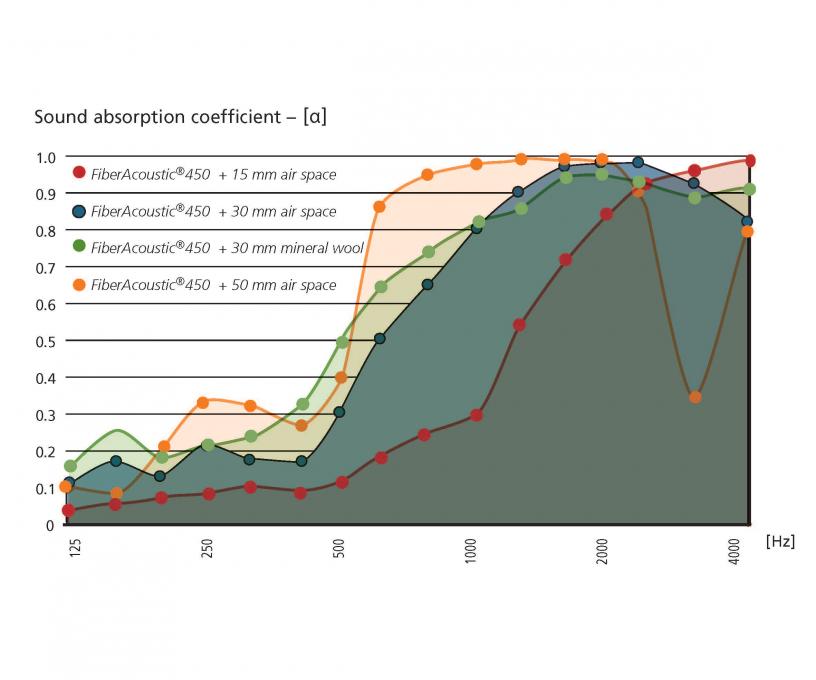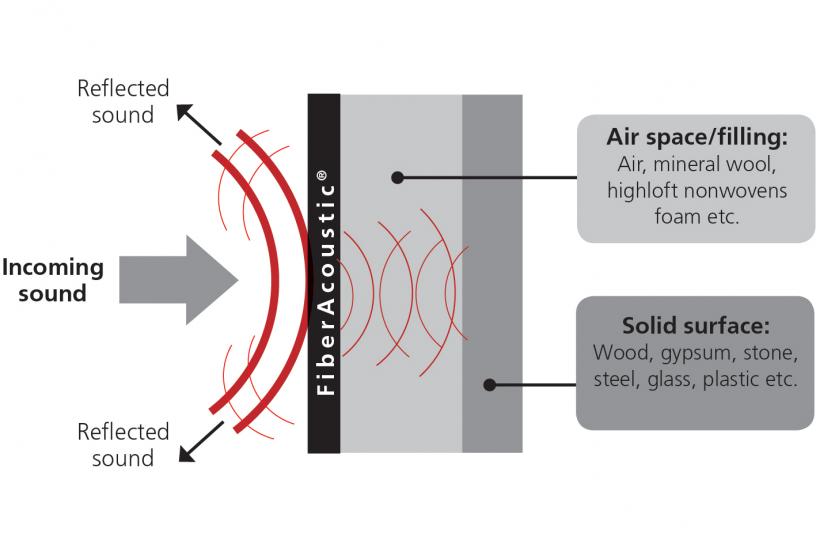What is sound?
Sound is changes in the air pressure, oscillating around the atmospheric pressure. For the human ear, the important parameters are the frequency and the sound level. The frequency is measured in Hertz (Hz), and describes how many times per second the sound pressure oscillates around the atmospheric pressure. At low frequencies the sound is low (bass) and at high frequencies the sound is high (treble). The sound level is measured in decibel (dB) on a logarithmic scale, and describes the deviation in air pressure from that of the ambient atmospheric pressure. Typical conversation is measured to be 60 dB, an increase to 70 dB will be perceived as a doubling of the sound intensity.
Sound absorption
Sound is pressure waves travelling through air. Sound absorption is the absorption of sound waves in a material and is the process where sound energy is dissipated into heat energy. The sound absorption properties of a material are characterised by the sound absorption coefficient α, and vary from 0 to 1. Sound absorption of a material is frequency dependent.
α = 1.0 equals 100% sound absorption
α = 0.0 equals 0% sound absorption

How it works
When a sound wave strikes a surface of a material, it is either reflected or it penetrates the material. If the acoustic impedance of this material is too high, the sound waves are reflected and if the acoustic impedance is too low, the sound waves penetrate the material without being absorbed. At the proper acoustic impedance of the material, the sound energy will be absorbed and converted into heat by viscous friction between the oscillating particles of the sound medium and the structure of the porous nonwoven material.
FiberAcoustic® is specially developed for optimal acoustic performance in human spaces provided by tuned acoustic impedance within a broad spectrum of frequencies.
Why air space behind FiberAcoustic®
The space behind FiberAcoustic® is essential for the acoustic performance since it controls the frequency at which maximum sound absorption is obtained. Wide space provides absorption at low frequencies; narrow space provides absorption at high frequencies.
When a sound wave has entered the surface, the optimal acoustic impedance of FiberAcoustic® ensures that sound waves are encapsulated in the space behind FiberAcoustic®. Sound energy is removed by sound waves hitting back and forth between a solid surface and FiberAcoustic®.
The space behind FiberAcoustic® consists of either air or filling. With air as space, FiberAcoustic® ensures high acoustic performance, whereas filling moves the absorption slope towards lower frequencies.

FiberAcoustic® 75
Learn more about FiberAcoustic® 75. A highly flexible and flame retardant solution, that ensures maximum breathability. No dust or skin irritation guaranteed.
FiberAcoustic® 450
Learn more about FiberAcoustic® 450. A highly flexible and flame retardant solution, that ensures maximum breathability and is UV resistant. No skin irritation guaranteed.
